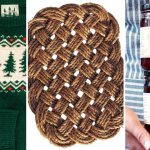Open Studio: Vermont Potter Miranda Thomas
Vermont artisan Miranda Thomas crafts pottery that holds a world of expression.

Coffee By Design | Portland, Maine
Photo Credit : Katherine KeenanMiranda Thomas has a voice made for a good chat. There’s a complexity to it, with vowels and inflections shaped by both her British parentage and her years spent living in Australia, England, Italy, and America. There’s a warmth, as well, that flows from her love of bringing things into the world, be they children or gardens or works of art. It’s a voice of someone you could imagine welcoming into your home.
Her pottery has a voice, too. From the blue and white of the Netherlands to the lustrous gold of the Middle East, it carries the accent of many lands; at the same time, its techniques speak of centuries of human culture. But to really hear what it has to say, Thomas believes, you need to touch it.
“Imagine you have a mug, and you’re putting your lips to it or your hands to it or just sort of resting it against your cheek,” she says. “And if it’s been made by hand, you can feel those very slight variances in the surface. It’s just as if you’re having a conversation with it. It’s another form of your senses being coaxed alive.”
Making things by hand—and putting them directly into the hands of others—is a calling that Thomas has long shared with her husband, the furniture maker Charlie Shackleton. After having met at an art and design school in England, the two crossed paths again in Vermont, where they worked for the famed Irish artisan Simon Pearce. Before long they were married and working for themselves, and today they preside over their joint workshops, ShackletonThomas, which has been headquartered in the same 19th-century mill building in Bridgewater for much of their company’s three-decade-plus history.
The couple’s mediums are different, but their designs are complementary—in the showroom, her quiet, elegant pottery sits alongside his classic wood furniture. And their point of view is a shared one.
“We both love putting life into an inanimate object,” Thomas says. “[Handcrafting] takes a particular sort of mixture of material, observation, skill, many things that culminate from your very hands, and it’s something the machine can’t do.

Photo Credit : World Economic Forum

Photo Credit : Clara Florin
“There’s a famous saying, I’m pretty sure by Pascal: What is it that puts life into an inanimate object? For is that not what man is? And if you think about it, we’re the same as the rocks and the trees and everything around us, but there’s a little bit of magic that we instill [in the clay and the wood], and that’s what gives them life.”
Thomas first realized her affinity for pottery (which she affectionately calls “cooking with rocks”) when it was introduced at her high school in Australia. “It was the most surprising thing, at the age of 16, to look down and see a bowl just appearing underneath your hands,” she recalls. “I loved it immediately, like I loved surfing. So I just kept doing it.”
She honed her craft with a bachelor’s degree in ceramics as well as learning directly from master potters in England, notably Michael Cardew. Thomas’s distinctive style emerged early on: strongly decorative but not ornate, with an emphasis on universal symbols of nature, like fish and rabbits, trees and flowers, painted or carved onto the clay.
Thomas was already well into making pottery under her own name—which she had begun doing in 1984—when she found herself taking commissions from, of all places, the White House. In 1998, on a whim, she had sent President Bill Clinton a “rudimentary, really simple little pot” as a gift in appreciation for the country’s recent and notably long stretch of peace. What came back was a thank-you note … and then a request for 16 turquoise and gold pots to be given to Middle Eastern dignitaries … and then a request for a very large white porcelain bowl carved with a peace dove design, to be Clinton’s personal gift to Pope John Paul II.
(About the Pope’s bowl: Because of the tight deadline, Thomas actually made six of them simultaneously in hopes that just one would sit absolutely true, its glaze pristine and incandescent. And just one did. As for the rest, she says, “President Clinton heard about the bowls that didn’t come out perfectly and he wanted them anyway, because he felt he himself wasn’t perfect. And he gave some of those as gifts as well.”)

Photo Credit : Clara Florin
Thomas has had several other high-level commissions since then, including bowls for the United Nations to present to Kofi Annan and Ban Ki-moon, but much of what she makes is meant for everyday people to use in everyday life. And for Thomas, her lasting legacy isn’t about who buys her pottery, anyway. It’s about the next generation who are working alongside her.
“We have this incredible flow of people across our workshops here who want to learn to be either craftsmen or designer craftsmen, and we’ve created a home or a sanctuary for them for a while,” she says. “When you teach somebody skills, it’s like passing the torch. It’s a wonderful, wonderful thing. And human beings need those skills to be happy. So it’s the one thing I can do for the human race, I think. Working with people and working on those skills and sharing that language—it really places you on a long, long timeline.”
Editor’s note: Like many homes and businesses across Vermont, the historic mill building in Bridgewater that houses ShackletonThomas was flooded by record rainfall as this issue was going to press. As repairs continue, the web store featuring Miranda Thomas’s pottery and Charlie Shackleton’s furniture remains open for orders, via shackletonthomas.com.







